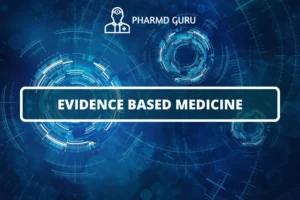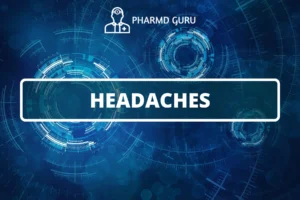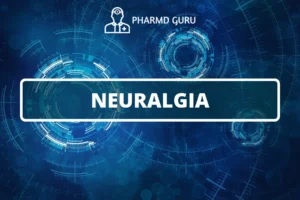Epilepsy is a neurological disorder characterized by recurrent seizures, which are abnormal electrical discharges in the brain. It affects millions of people worldwide and can significantly impact their quality of life. Understanding the etiopathogenesis, or the underlying mechanisms, of epilepsy is crucial for its diagnosis and appropriate management. In this article, we will explore the etiology of epilepsy, the pathophysiological processes involved, and the pharmacotherapy options used in its treatment.
SCROLL DOWN TO THE BOTTOM OF THIS PAGE FOR ACTUAL NOTES.
Table of Contents
- Introduction
- Understanding Epilepsy
- Etiology of Epilepsy
- Pathophysiology of Epilepsy
- Types of Seizures
- Diagnostic Approaches
- Treatment Options
- Pharmacotherapy for Epilepsy
- Non-Pharmacological Interventions
- Lifestyle Modifications
1. Introduction
Epilepsy is a neurological disorder characterized by recurrent seizures, which are episodes of abnormal brain activity. These seizures can vary in severity, duration, and presentation, and they may impact various aspects of an individual’s life. Etiopathogenesis studies the causes and mechanisms that lead to the development of epilepsy, while pharmacotherapy focuses on the use of medications to manage and control seizures.
2. Understanding Epilepsy
Epilepsy is a complex neurological condition that can have multiple causes and manifestations. It is considered a chronic disorder, as individuals with epilepsy experience recurrent seizures. Seizures result from abnormal electrical discharges in the brain, which can disrupt normal brain function and lead to a wide range of symptoms.
3. Etiology of Epilepsy
The etiology of epilepsy is diverse and can involve various factors, including:
- Genetic predisposition: Certain genetic mutations or inherited traits may increase the susceptibility to seizures.
- Structural brain abnormalities: Brain malformations, tumors, head injuries, or stroke can contribute to the development of epilepsy.
- Infectious diseases: Infections such as meningitis, encephalitis, or neurocysticercosis can trigger epilepsy.
- Developmental disorders: Conditions like autism spectrum disorder or neurodevelopmental disorders may be associated with epilepsy.
- Metabolic imbalances: Disturbances in electrolyte levels, glucose metabolism, or other metabolic processes can lead to seizures.
4. Pathophysiology of Epilepsy
The pathophysiology of epilepsy involves abnormal electrical activity in the brain, leading to seizures. Several mechanisms contribute to this abnormal activity, including:
- Excitatory-inhibitory imbalance: Imbalances between excitatory and inhibitory neurotransmitters can disrupt the normal electrical activity in the brain.
- Ion channel dysregulation: Mutations or abnormalities in ion channels can lead to abnormal neuronal excitability and increased seizure susceptibility.
- Neurotransmitter imbalances: Alterations in the levels or functioning of neurotransmitters such as glutamate, gamma-aminobutyric acid (GABA), or serotonin can affect seizure control.
- Network abnormalities: Disruptions in the synchronization and communication between different brain regions can contribute to seizure generation and propagation.
5. Types of Seizures
There are different types of seizures, and understanding their characteristics is essential for accurate diagnosis and treatment. Common types of seizures include:
- Generalized seizures: These seizures involve widespread electrical discharges that affect the entire brain.
- Focal seizures: Focal seizures originate in a specific area of the brain and can be further classified as focal onset aware or focal onset impaired awareness seizures.
- Absence seizures: Absence seizures are characterized by brief lapses of consciousness and staring spells.
- Myoclonic seizures: Myoclonic seizures manifest as sudden, brief muscle jerks.
- Tonic-clonic seizures: Tonic-clonic seizures, also known as grand mal seizures, involve loss of consciousness, convulsions, and muscle rigidity.
6. Diagnostic Approaches
Diagnosing epilepsy involves a comprehensive evaluation, including:
- Medical history: Gathering detailed information about the patient’s medical history, including the description of seizures and potential triggers.
- Electroencephalogram (EEG): EEG measures the electrical activity of the brain and can help identify abnormal patterns associated with seizures.
- Imaging studies: Magnetic resonance imaging (MRI) or computed tomography (CT) scans may be conducted to detect structural abnormalities or brain lesions.
- Blood tests: Blood tests can be performed to identify underlying metabolic or genetic conditions associated with epilepsy.
7. Treatment Options
The treatment of epilepsy aims to control seizures, improve the quality of life, and minimize the adverse effects of antiepileptic medications. The management of epilepsy involves various approaches, including:
- Pharmacotherapy: The primary treatment for epilepsy is the use of antiepileptic drugs (AEDs) to control seizures. These medications work by suppressing abnormal electrical activity in the brain.
- Non-pharmacological interventions: In some cases, non-pharmacological interventions may be considered, such as ketogenic diet, vagus nerve stimulation, or responsive neurostimulation.
- Surgery: Surgical interventions may be recommended for individuals with medically refractory epilepsy, where seizures are not adequately controlled by medications. Surgery aims to remove or disconnect the brain area responsible for generating seizures.
8. Pharmacotherapy for Epilepsy
Pharmacotherapy plays a central role in the management of epilepsy. Several antiepileptic medications are available, and the choice of medication depends on various factors, including the type of seizures, age of the patient, comorbidities, and potential drug interactions. Commonly used antiepileptic drugs include:
- Carbamazepine
- Valproate
- Lamotrigine
- Levetiracetam
- Phenytoin
- Topiramate
- Oxcarbazepine
It is crucial for individuals with epilepsy to work closely with healthcare professionals to determine the most appropriate medication and dosage for their specific needs.
9. Non-Pharmacological Interventions
In addition to pharmacotherapy, non-pharmacological interventions can be beneficial for managing epilepsy. These may include:
- Ketogenic diet: A high-fat, low-carbohydrate diet that has shown efficacy in reducing seizures, particularly in children with epilepsy.
- Vagus nerve stimulation: A procedure where a device is implanted in the body to deliver electrical impulses to the vagus nerve, helping to reduce seizure frequency and severity.
- Responsive neurostimulation: A newer approach where a device is implanted in the brain to detect and respond to abnormal electrical activity, aiming to prevent seizure onset or spread.
10. Lifestyle Modifications
Certain lifestyle modifications may also help in managing epilepsy and reducing the frequency of seizures. These may include:
- Regular sleep patterns: Maintaining a consistent sleep schedule can help prevent sleep deprivation, which can trigger seizures in some individuals.
- Stress management: Stress and anxiety can contribute to seizure frequency, so stress reduction techniques such as relaxation exercises or counseling may be beneficial.
- Medication adherence: It is essential to adhere to the prescribed medication regimen and communicate any concerns or side effects to the healthcare provider.
- Avoiding seizure triggers: Identifying and avoiding specific triggers, such as flashing lights or certain medications, can help reduce seizure occurrence.
ACTUAL NOTES:




